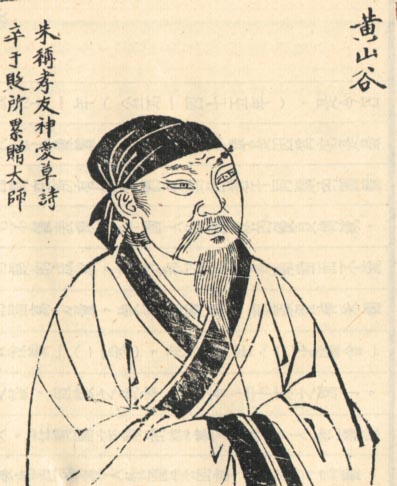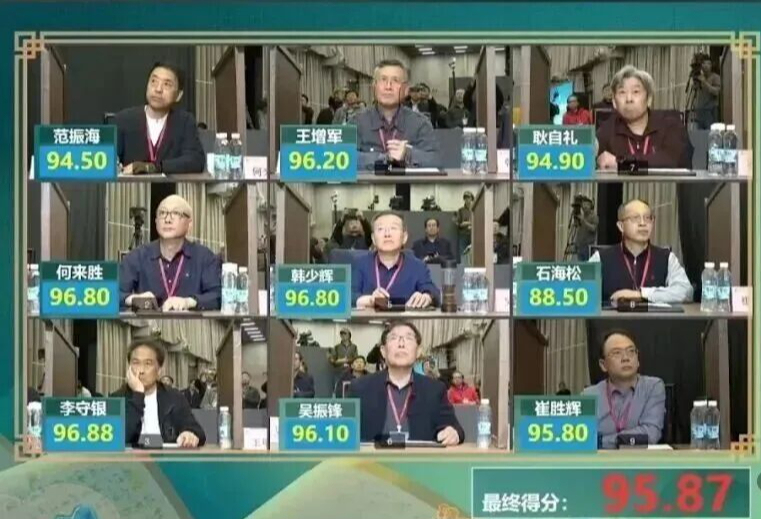
The Paper learned that the State Administration of Cultural Heritage issued a notice on July 14 to publish the "First Batch of Ancient Famous Monuments and Inscriptions". , are distributed in 31 provinces, autonomous regions, and municipalities directly under the central government, and are kept and collected in 323 cultural relics protection units and 221 cultural relics collection units.
According to reports, the list released this time fully shows the age, type, shape and distribution area of ancient Chinese inscriptions, records the history of multi-ethnic exchanges and integration in ancient my country, and is a vivid example of the pattern of pluralism and unity of the Chinese nation. Relevant cultural relics also show the evolution of ancient Chinese characters, calligraphy, and literature, and reflect the important achievements of ancient economic society, scientific and technological development.
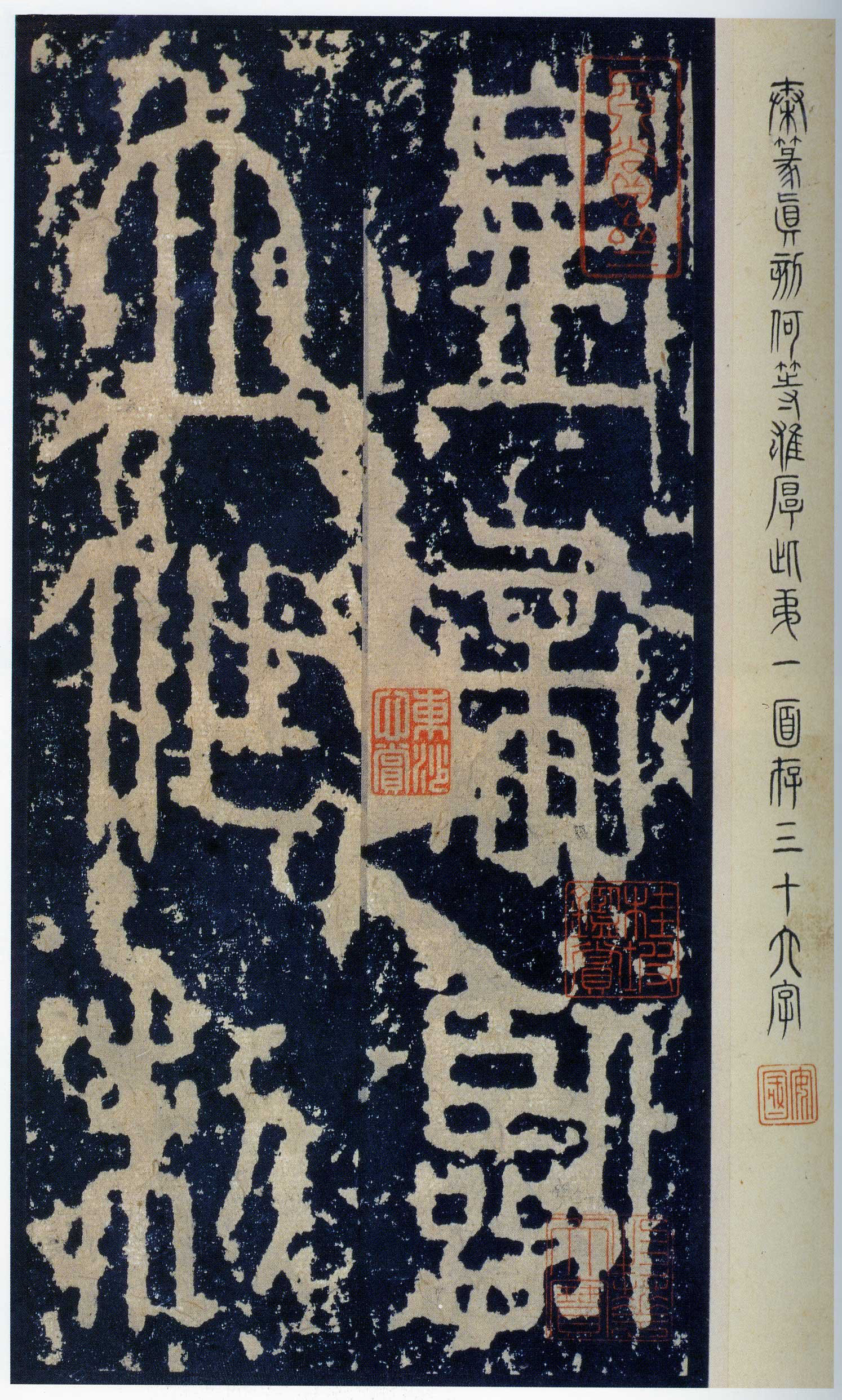
Stone Rubbings of Mount Tai in the Qin Dynasty
The relevant person in charge of the State Administration of Cultural Heritage stated that considering the huge amount of resources, the list of ancient famous steles and inscriptions is published in batches. object. In the next step, the State Administration of Cultural Heritage will formulate policies and measures to strengthen the protection and management of ancient inscriptions and stone inscriptions, implement a number of projects for the protection and interpretation of ancient inscriptions and stone inscriptions, and comprehensively improve the level of protection and utilization of ancient inscriptions and stone inscriptions. The ancient stone inscriptions and stone inscriptions in my country are a huge number and variety of cultural relics, which are unique historical and cultural carriers. Ancient inscriptions and stone inscriptions are a collection of calligraphy, painting, sculpture and other art forms, recording the political, economic, social, cultural, astronomical, geography, scenery and other multi-dimensional and rich historical information in the development of the Chinese nation and Chinese civilization. Ancient inscriptions and stone inscriptions include steles, tablets, epitaphs, cliffs, statues, scriptures and other major types.
The "List" contains a large number of cultural relics and rich content. According to the person in charge, the situation of the famous monuments and inscriptions in various historical periods selected into the "List" is as follows:
In the pre-Qin period, most of the inscriptions on steles were made of natural stones or rocks, and usually no processing was done on the stones or rocks, or they were simply made and leveled. The "Catalogue" contains 11 pre-Qin stone carvings, among which the earliest one is the Stone Drum of the Warring States Period.
During the Qin and Western Han Dynasties, the types, contents and forms of inscriptions and stone inscriptions were enriched, but there are few cultural relics of inscriptions and stone inscriptions preserved today. The "Catalogue" includes 3 stone inscriptions of the Qin Dynasty, including the stone inscription of Langya II, 17 stone inscriptions of the Western Han Dynasty, including the stone inscription on the top of the tomb of Jun Liu in Juchao, the stone inscription of Wufeng in the Western Han Dynasty, and the stele of Yu Xiaoyu in the Western Han Dynasty.

Stone Gate Ode to the Han Dynasty

Western Han Dynasty Calligraphy Cliff Rubbings
During the Eastern Han Dynasty, a large number of inscriptions and stone inscriptions appeared, and the types and shapes of inscriptions and stone inscriptions gradually became clear. The main types were steles, steles, cliffs, stone gates, and stone scriptures, with a wide distribution. The "Catalogue" includes 125 pieces including Yang Shugong's Remnant Stele, the Eastern Han Yongxing Yiying Stele, the Xiping Stone Classic, and the Eastern Han Zhongping Second Year Cao Quan Stele.
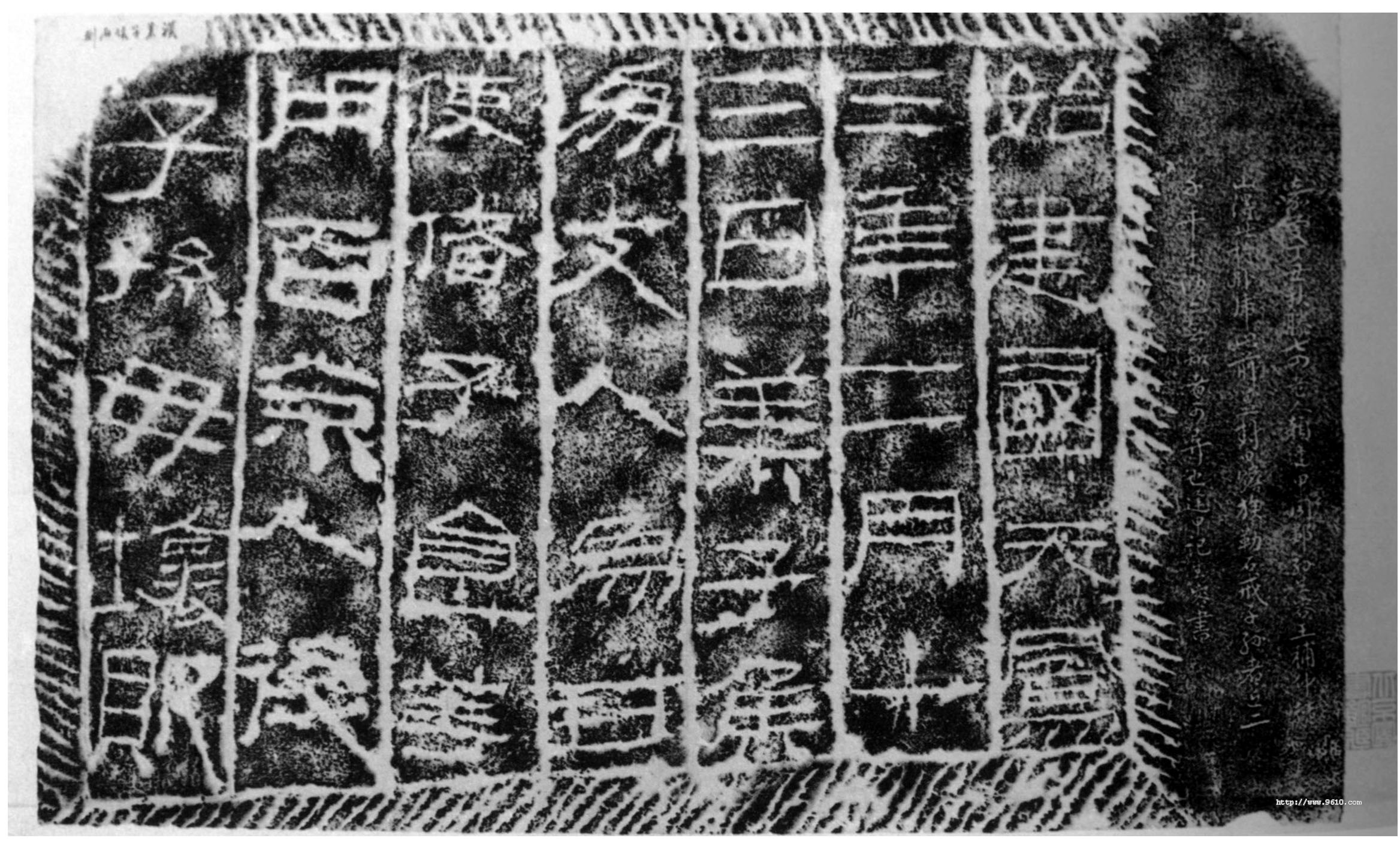
Laizihou carved stone rubbings

Part of Rubbings of Zhang Qian Stele in Han Dynasty
During the Wei, Jin, Southern and Northern Dynasties, a large number of steles and stone inscriptions inscribed with scriptures appeared, and new types such as epitaphs appeared, and their distribution range was wider. The "Catalogue" includes 299 inscriptions on the inscriptions on the "Twenty Products of Longmen" statues in the Longmen Grottoes, including the inscriptions on Cao Zhen's remnant stele, Haotaiwang stele, Cuanbaozi stele, Yicihui stone pillar, and Longmen Grottoes.
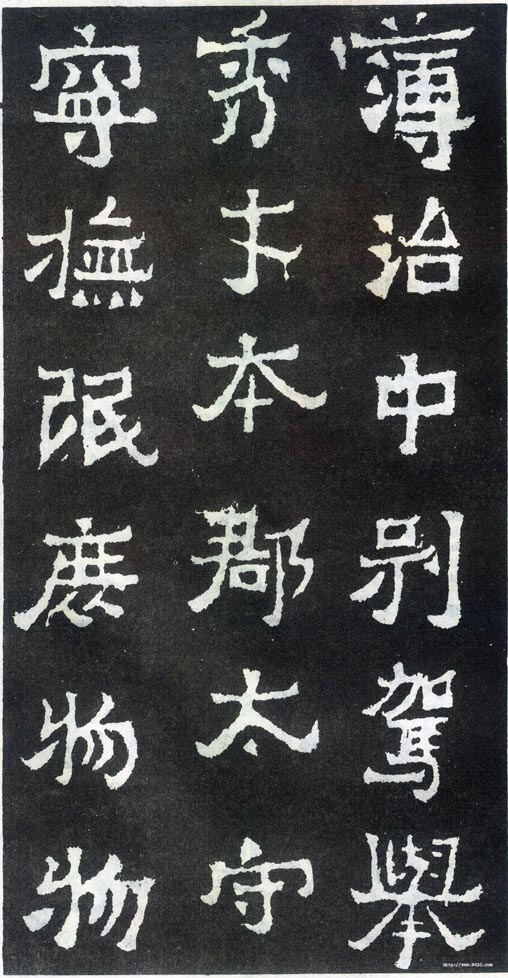
Part of Rubbings of Cuanbaozi Stele
During the Sui and Tang Dynasties, steles and stone inscriptions became more abundant in form and production techniques were mature, and steles, epitaphs, cliffs, engraved scriptures, tower inscriptions, scripture buildings and other types were widely distributed. The "Catalogue" includes the first preface to the Lotus Sutra inscribed in the Sui Dynasty, the stele of Longzang Temple, the inscription on the cliff of Mount Tai in the Tang Dynasty, the stele of Dehua in Nanzhao, the stele of the alliance between Tang and Tibet, the inscription of envoys from Tianzhu in the Tang Dynasty, and the Tripitaka of the Tang Dynasty. There are 437 passages including the preface to the holy religion.
During the Five Dynasties, Song, Liao, Jin and Yuan Dynasties, the stele and stone inscriptions basically retained the shape and system of the Tang Dynasty, with a wider range of use and richer text content. The "Catalogue" includes the stele of Daguan's holy work, the stele of the virgin girl, Su Shi's scriptures on Guan Zizai Dharani, the stele of "Wan'an Bridge", the stone carvings of praying for wind by Sima Ji in the Southern Song Dynasty, the inscription on the holy palace of the New Religious Society of the Great Song Dynasty, 450 monuments including the Sensing Pagoda Monument of Huguo Temple and the Monument of Imperial Clothes Stored in the Great Yuan Dynasty were rebuilt.
During the Ming and Qing Dynasties, steles and stone inscriptions reflecting ancient politics, military affairs, social development and cultural exchanges were the most representative. The "Catalogue" includes the Yellow River Illustrated Monument in the 14th year of Jiajing in the Ming Dynasty, the "Lama Shuo" stele made by the Emperor Qianlong in the Qing Dynasty, the imperial stele for the completion of Qinghai University, the imperial stele for the completion of Taixue in Qinghai, the imperial stele for the completion of Jinchuan, There are 316 records, including the record of all Turhut returning to Shun, Shi Lang's "Shi Quan Jing Ji", the stele of the Qing minister in Tibet patrolling the border, and the stele of Pingding Junggar Le.

Pacifying the Junggar Le Inscription Stele Tianshan Network Map
It is reported that the "List" comprehensively shows the age, type, shape and distribution area of ancient Chinese inscriptions; records the history of multi-ethnic exchanges and integration in ancient China; records many major historical events and important events in the development of a unified multi-ethnic country. Historical figures; there are a total of 1148 inscriptions in the Song Dynasty and before the Song Dynasty in the "List", which reflect the development process and evolution law of ancient Chinese characters and calligraphy, as well as the main calligraphy style, style, technique and genre, and are the keystone of the development history of ancient characters, calligraphy and literature. Important information; some inscriptions in the "List" record some important achievements in the development of productive forces, production technology progress, and scientific inventions in ancient China; some inscriptions in the "List" use Arabic, Latin, Sanskrit, Persian, and Borneo Mi, Pahlavi, Syriac and other scripts vividly present the history of exchanges between Chinese and foreign civilizations.
The release of the "First Batch of List of Ancient Famous Steles and Inscriptions" is an important measure to strengthen the protection and utilization of steles and cultural relics. The State Administration of Cultural Heritage stated that the next step will be to formulate and introduce policies and measures to strengthen the protection and management of ancient inscriptions and stone inscriptions, implement a number of ancient inscriptions and stone inscriptions ontological protection and interpretation and display projects, and comprehensively improve the level of protection and utilization of ancient inscriptions and stone inscriptions.
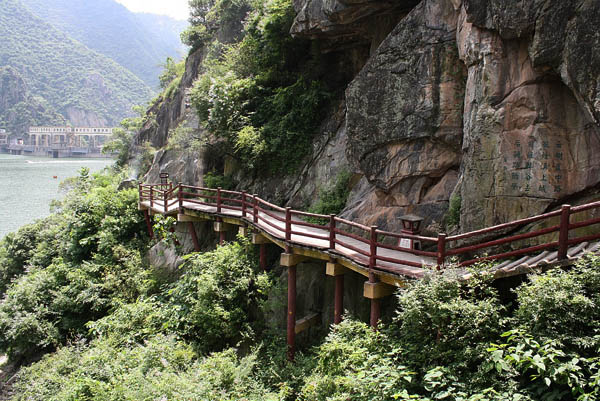
Antique plank road of Shimen Tunnel at the southern end of Baoxie Road, Baocheng, Shaanxi
Interview|Relevant person in charge of the State Administration of Cultural Heritage
Question: The State Administration of Cultural Heritage recently issued the "List of the First Batch of Ancient Famous Monuments and Inscriptions". Please briefly introduce the background of the List.
Answer : The ancient inscriptions and stone inscriptions mentioned in the "Catalogue" refer to ancient material relics carved with inscriptions on various stone materials, which have historical, artistic, scientific and other values. The ancient stone inscriptions and stone inscriptions in my country are a huge number and variety of cultural relics, which are unique historical and cultural carriers. Ancient inscriptions and stone inscriptions are a collection of calligraphy, painting, sculpture and other art forms, recording the political, economic, social, cultural, astronomical, geography, scenery and other multi-dimensional and rich historical information in the development of the Chinese nation and Chinese civilization. Ancient inscriptions and stone inscriptions include steles, tablets, epitaphs, cliffs, statues, scriptures and other major types.
The party and the state attach great importance to the protection of ancient inscriptions and stone inscriptions. In 1961, the State Council assigned Xi’an Forest of Steles, Yicihui Stone Pillars, Jiaxiang Wu’s Tomb Group of Stone Carvings, Baoxie Road Stone Gate and its Cliff Stone Carvings, Cuan Longyan Stele, Cuan Baozi Stele, Duan’s and Thirty-seven Union League Stele, Chong Ancient inscriptions and stone inscriptions such as the Induction Pagoda Stele of Xiuhuguo Temple were announced as the first batch of national key cultural relics protection units. Among the first to eighth batches of national key cultural relics protection units, a total of 136 monuments and stone inscriptions are specially protected as cultural relics, and nearly 1,000 pieces (sets) of stele and stone inscriptions in the collection of movable cultural relics are rated as first-class cultural relics. A large number of ancient inscriptions and stone inscriptions are affiliated cultural relics of the national key cultural relics protection units, such as more than 2,000 inscriptions from the Han Dynasty to the Ming and Qing Dynasties in Qufu Confucian Temple and Confucian Mansion, inscriptions on the "Twenty Products of Longmen" statues in Longmen Grottoes, and Tang and Fan in front of Jokhang Temple. League Monument, etc.
In the first to third national cultural relics census, the first national movable cultural relics census, and the special investigation of the cultural relics resources of the Great Wall, the Yellow River, the Yangtze River, and cave temples, the State Administration of Cultural Heritage included ancient inscriptions and stone inscriptions into the scope of investigation; The Interim Provisions on the Printing of Ancient Stone Inscriptions, the Interim Measures for the Reproduction of Cultural Relics, the Measures for the Administration of Duplication and Rubbing of Cultural Relics, the release of the Classification and Diagram of Diseases of Stone Relics, the Standards for the Recording of Archives for the Protection and Restoration of Stone Relics, and the Protection Project of Stone Relics "Reconnaissance Specifications", the establishment of the "Masonry Cultural Relics Protection National Cultural Relics Key Research Base"; guide the implementation of a number of ancient stele and stone inscription cultural relics ontological protection, display and display, environmental improvement, monitoring and early warning, and protective facility construction projects. Some provinces (autonomous regions, municipalities directly under the central government) cultural relics administrative departments have organized the investigation, research, protection and display of ancient inscriptions and stone inscriptions in their regions, and have made a series of work progress.
Recently, in order to implement the spirit of General Secretary Xi Jinping's important instructions and fully consolidate the foundation of the protection and management of ancient stele and stone inscription cultural relics, the State Administration of Cultural Heritage has deployed and carried out the work of mapping and cataloging ancient stele and stone inscription cultural relics resources. Considering the huge amount of resources, the list of ancient famous steles and inscriptions is published in batches. The "List" released by the State Administration of Cultural Heritage this time selects ancient steles and stone inscriptions carved before 1911. The scope of selection mainly includes the following three aspects: first, the cultural relics of the national key cultural relics protection units or their subsidiary cultural relics;
Question: The State Administration of Cultural Heritage has done a lot of work for the release of the List. Please introduce the organization and implementation, selection process and main criteria of the List.
Answer: The establishment of the "List" is organized by the State Administration of Cultural Heritage, and the administrative departments of cultural relics of provinces (autonomous regions and municipalities directly under the Central Government) are responsible for organizing local administrative departments of cultural relics at all levels, protection agencies of national key cultural relics protection units, and state-owned cultural relics collection units to be responsible for primary selection and recommendation. The Chinese Academy of Cultural Heritage serves as a professional support unit for the establishment of the List. The selection principle is based on the historical, artistic, and scientific values of ancient stele and stone inscriptions, taking into account the representativeness and scarcity of ancient stele and stone inscriptions in terms of type, content, and shape, as well as the current status of cultural relics.
The selection criteria mainly include six aspects. One is that the writers and calligraphers of inscriptions and stone inscriptions are famous calligraphers or representative historical figures, who are found in historical records and have a wide influence; Historical materials have important research value in history and art history; thirdly, the shape, decoration and carving of inscriptions and stone inscriptions have typical characteristics, and are important objects of archaeological research; Fifth, stele and stone inscription cultural relics have a prominent role in geographical identification; sixth, stele and stone inscription cultural relics reflect the evolution and development of ancient characters, or have important version research value.
In accordance with the work deployment of the State Administration of Cultural Heritage, provinces (autonomous regions and municipalities directly under the central government) submitted nearly 5,600 recommended items for ancient famous monuments and inscriptions. The China Cultural Heritage Research Institute has set up a special working class to review the recommended projects. The State Administration of Cultural Heritage organized several special meetings, fully listened to the opinions of experts and scholars in the fields of archaeology, history, cultural relics, ancient characters, ancient documents, calligraphy, etc., as well as local cultural relic administrative departments and cultural and museum institutions, discussed and revised it repeatedly, and officially issued it after being approved by the party group of the Bureau. "List".
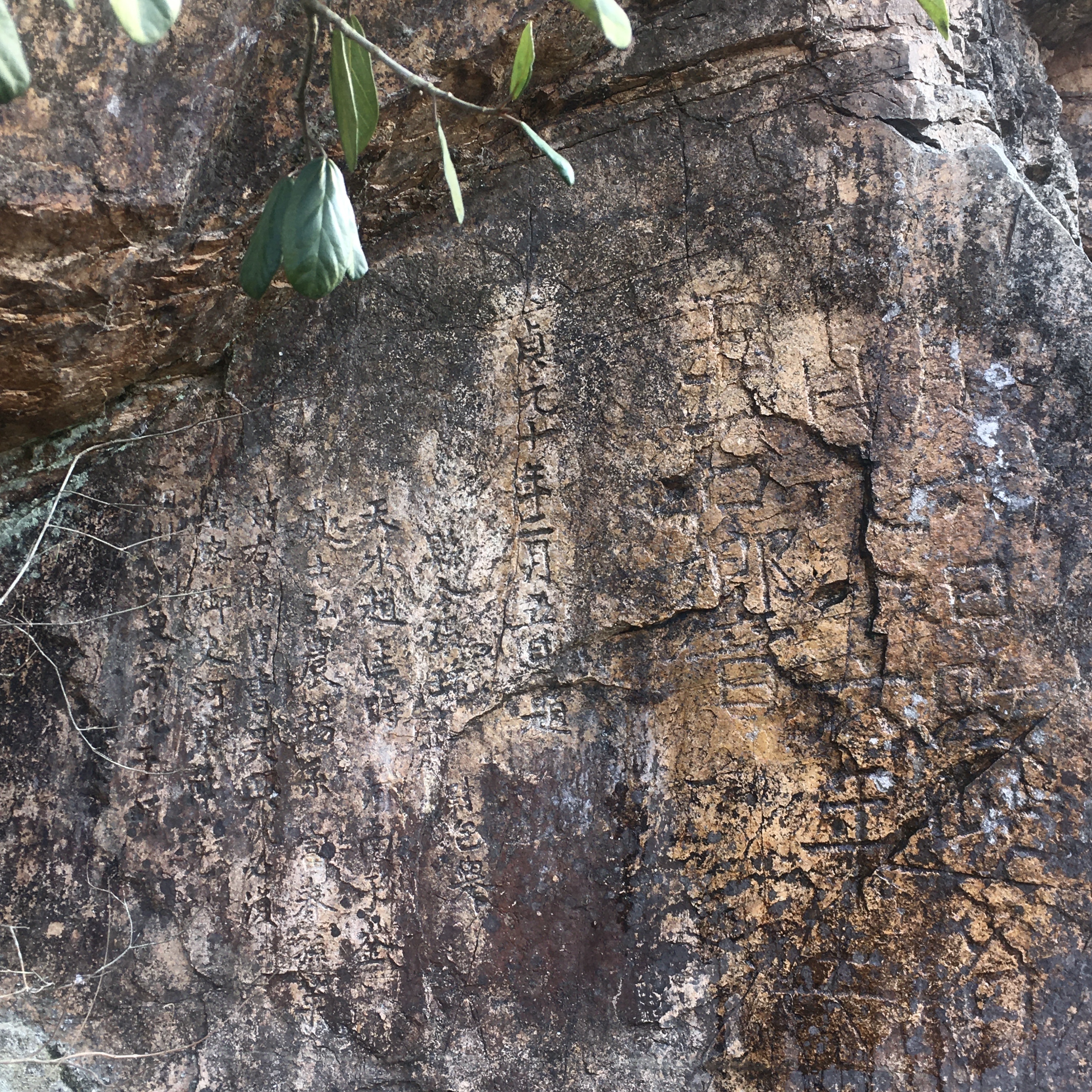
Tang Dynasty Stone Carvings in Zhejiang
Question: The "List" contains a large number of cultural relics and rich content. Please introduce the basic situation of the "List".
Answer : The 1,658 ancient inscriptions and cliff inscriptions included in the "Catalogue" date from the Warring States period to the Qing Dynasty, are distributed in 31 provinces, autonomous regions, and municipalities directly under the Central Government, involving 323 cultural relics protection units and 221 state-owned cultural relics collection units. The details of famous steles and inscriptions in each historical period selected into the "List" are as follows:
In the pre-Qin period, most of the inscriptions on steles were made of natural stones or rocks, and usually no processing was done on the stones or rocks, or they were simply made and leveled. The "Catalogue" contains 11 pre-Qin stone carvings, among which the earliest one is the Stone Drum of the Warring States Period.
During the Qin and Western Han Dynasties, the types, contents and forms of inscriptions and stone inscriptions were enriched, but there are few cultural relics of inscriptions and stone inscriptions preserved today. The "Catalogue" includes 3 stone inscriptions of the Qin Dynasty, including the stone inscription of Langya II, 17 stone inscriptions of the Western Han Dynasty, including the stone inscription on the top of the tomb of Jun Liu in Juchao, the stone inscription of Wufeng in the Western Han Dynasty, and the stele of Xiaoyu in the Western Han Dynasty.
During the Eastern Han Dynasty, a large number of inscriptions and stone inscriptions appeared, and the types and shapes of inscriptions and stone inscriptions gradually became clear. The main types were steles, steles, cliffs, stone gates, and stone scriptures, with a wide distribution. The "Catalogue" includes 125 pieces including Yang Shugong's Remnant Stele, the Eastern Han Yongxing Yiying Stele, the Xiping Stone Classic, and the Eastern Han Zhongping Second Year Cao Quan Stele.
During the Wei, Jin, Southern and Northern Dynasties, a large number of steles and stone inscriptions inscribed with scriptures appeared, and new types such as epitaphs appeared, and their distribution range was wider. The "Catalogue" includes 299 inscriptions on the inscriptions on the "Twenty Products of Longmen" statues in the Longmen Grottoes, including the inscriptions on Cao Zhen's remnant stele, Haotaiwang stele, Cuanbaozi stele, Yicihui stone pillar, and Longmen Grottoes.
During the Sui and Tang Dynasties, steles and stone inscriptions became more abundant in form and production techniques were mature, and steles, epitaphs, cliffs, engraved scriptures, tower inscriptions, scripture buildings and other types were widely distributed. The "Catalogue" includes the first preface to the Lotus Sutra inscribed in the Sui Dynasty, the stele of Longzang Temple, the inscription on the cliff of Mount Tai in the Tang Dynasty, the stele of Dehua in Nanzhao, the stele of the alliance between Tang and Tibet, the inscription of envoys from Tianzhu in the Tang Dynasty, and the Tripitaka of the Tang Dynasty. There are 437 passages including the preface to the holy religion.
During the Five Dynasties, Song, Liao, Jin and Yuan Dynasties, the stele and stone inscriptions basically retained the shape and system of the Tang Dynasty, with a wider range of use and richer text content. The "Catalogue" includes the stele of Daguan's holy work, the stele of the virgin girl, Su Shi's scriptures on Guan Zizai Dharani, the stele of "Wan'an Bridge", the stone carvings of praying for wind by Sima Ji in the Southern Song Dynasty, the inscription on the holy palace of the New Religious Society of the Great Song Dynasty, 450 monuments including the Sensing Pagoda Monument of Huguo Temple and the Monument of Imperial Clothes Stored in the Great Yuan Dynasty were rebuilt.
During the Ming and Qing Dynasties, steles and stone inscriptions reflecting ancient politics, military affairs, social development and cultural exchanges were the most representative. The "Catalogue" includes the Yellow River Illustrated Monument in the 14th year of Jiajing in the Ming Dynasty, the "Lama Shuo" stele made by the Emperor Qianlong in the Qing Dynasty, the imperial stele for the completion of Qinghai University, the imperial stele for the completion of Taixue in Qinghai, the imperial stele for the completion of Jinchuan, There are 316 records, including the record of all Turhut returning to Shun, Shi Lang's "Shi Quan Jing Ji", the stele of the Qing minister in Tibet patrolling the border, and the stele of Pingding Junggar Le.
Q: What are the main features of the Directory?
Answer : The Directory mainly has the following six characteristics.
Feature 1: It presents the overall appearance of ancient inscriptions and stone inscriptions.
The "List" comprehensively shows the age, type, shape and distribution area of ancient Chinese inscriptions. In terms of age, the "Catalogue" fully covers 18 countries including the Warring States Period, Qin Dynasty, Western Han Dynasty, Eastern Han Dynasty, Three Kingdoms, Western Jin Dynasty, Eastern Jin Dynasty, Southern and Northern Dynasties, Sui, Tang, Five Dynasties and Ten Kingdoms, Song, Liao, Xixia, Jin, Yuan, Ming and Qing. major historical periods. In terms of types, the "Catalogue" comprehensively covers steles, tablets, epitaphs, cliff stone inscriptions, as well as main types such as carved scriptures, stone drums, stone scripture buildings, stone towers, stone pagodas, portrait stones, and statue stones. In terms of distribution, the Directory covers 31 provinces (autonomous regions and municipalities directly under the Central Government) in my country, with Shaanxi, Shandong, Henan, Beijing and other provinces (cities) being the most numerous.
Feature 2: It is a vivid example of the pluralism and unity of the Chinese nation.
The Directory records the history of multi-ethnic exchanges and integration in ancient my country. The inscriptions in the "List" involve Chinese, Tibetan, Mongolian, Manchu, Uyghur, Tubo, Xixia, Basiba, Uighur, Khitan, Jurchen, Miao, Chagatai, etc. 13 kind. Among them, the "Tang-Tibetan Meeting Alliance Monument" records the origin process of the Tibetan-Tang alliance oath, the purpose of the covenant, and the friendly relationship between the Tibetan and Tang Dynasties, and is an important witness of the unity of the Han and Tibetan nationalities. The "Cuan Baozi Stele" records the life of "General Zhenwei", the leader of the Cuan Tribe in ancient Southwest China, and is a testimony of national unity and social harmony. "Records of All the Torghuts Returning" records the history of the Turghuts returning to the motherland without hesitation, and reflects the centripetal force and cohesion of the Chinese nation.
Feature 3: It confirms the development process of a unified multi-ethnic country.
The "Directory" records many major historical events and important historical figures in the development process of the unified multi-ethnic country. Among them, the "Monument of Emperor Shixun who protected Gaochang in Yuan Dynasty" provided an important witness for the origin and development of the Gaochang Uighurs. Monument", "Pingding Junggarle Inscription Monument", "Lama Talk" Monument made by Emperor Qianlong of Qing Dynasty", "Shi Lang's 'Shiquanjing Ji'", "Monument of the Qing Minister's Patrol in Tibet", "Eminhe Zhuo Temple Stele of Qing Dynasty", "Sino-Russian Border "Qing Boundary Monument (Tuzi Pai)" and other records describe the history of the joint development and protection of the territory by all ethnic groups in our country.
Feature 4: It shows the evolution of ancient characters, calligraphy and literature.
There are a total of 1148 inscriptions in the Song Dynasty and before the Song Dynasty in the "List", which reflect the development process and evolution law of ancient Chinese characters and calligraphy, as well as the main calligraphy styles, styles, techniques and schools, and are important materials for the development history of ancient characters, calligraphy and literature. In terms of calligraphy style, there are not only official script, regular script, running script, cursive script, but also pre-Qin scripts such as ancient scriptures, as well as variant scripts of various dynasties. In terms of style, there are not only praises, praises, records, inscriptions, imperial edicts, but also classic documents and poems. Among them, the names of the representative calligraphy steles are engraved with "The Second Langya Carved Stone", "Kuiji Carved Stone", "Qin Taishan Carved Stone", "Eastern Han Yongshou Ritual Vessel Stele", "Eastern Han Zhongping Second Year Cao Quan Stele", "Xiping Stone Classic" " Three Kingdoms Wei Zhengshi Stone Classics", "Piyong Monument", "Northern Qi Longdong King Ganxiao Song", "Tang Jiucheng Palace Liquan Inscription Monument", "Tang Tianbao Eleven Years Multi-Pagoda Induction Monument", etc.
Feature 5: It reflects the important achievements of ancient economic society, science and technology development.
Some inscriptions in the "List" record some important achievements in the development of productive forces, production technology progress and scientific inventions and creations in ancient my country. Among them, the "Baiheliang Inscription" reflects the changes in the water level of the Yangtze River from the first year of Guangde in the Tang Dynasty (763 A.D.) to the present for more than 1,200 years, and has outstanding hydrological value. The "Reconstruction of Tongji Weir Regulations and Postscript Stele" records the history of Tongji Weir and is a precious historical material for studying the history of Tongji Weir and the history of local water conservancy. The "Kunming Lake Stele on Wanshou Mountain in the Qing Dynasty" records the purpose and process of expanding Kunming Lake, and is an important witness of the Beijing-Hangzhou Grand Canal and Beijing's urban planning and construction. The "Imperial Reconstruction of the Huiji Temple Monument" provides reliable information for the intersection of the Yellow and the Yellow Rivers during the Ming and Qing Dynasties.
Feature 6: It records the history of exchanges and mutual learning between Chinese civilization and other civilizations.
Arabic, Latin, Sanskrit, Persian, Brahmi, Pahlavi, Syriac and other scripts are used on some steles and stone inscriptions in the Directory, vividly presenting the history of exchanges between Chinese and foreign civilizations. Among them, the "Tang Jianzhong Second Year Daqin Nestorian Popularity in China Stele" records the process of Nestorianism spreading and merging in China along the Silk Road from the ninth year of Zhenguan (AD 635) to the second year of Jianzhong (AD 781). "The Inscription of Envoys from Tianzhu in the Great Tang Dynasty" records the deeds of Xuance, the imperial envoy of the Tang Dynasty, who made many missions to Tianzhu. The "Persian Shan Si Ding's epitaph" and other witnesses to the history of Arabs' migration and living in China along the Grand Canal are historical witnesses of the friendly exchanges between China and Arab states.
Ancient inscriptions and stone inscriptions are an important type of cultural relics with distinctive characteristics and outstanding value in my country's cultural relics resources, which embodies the outstanding continuity, innovation, unity, inclusiveness and peace of Chinese civilization. The release of the "First Batch of List of Ancient Famous Steles and Inscriptions" is an important measure to strengthen the protection and utilization of steles and cultural relics. In the next step, the State Administration of Cultural Heritage will formulate policies and measures to strengthen the protection and management of ancient inscriptions and stone inscriptions in accordance with the new era cultural relics work policy of "protection first, strengthen management, tap value, effectively use, and make cultural relics come alive", and implement a batch of The protection, interpretation and display of ancient inscriptions and stone inscriptions will comprehensively improve the level of protection and utilization of ancient inscriptions and stone inscriptions.
(This article is compiled based on information from the State Administration of Cultural Heritage and related materials)
